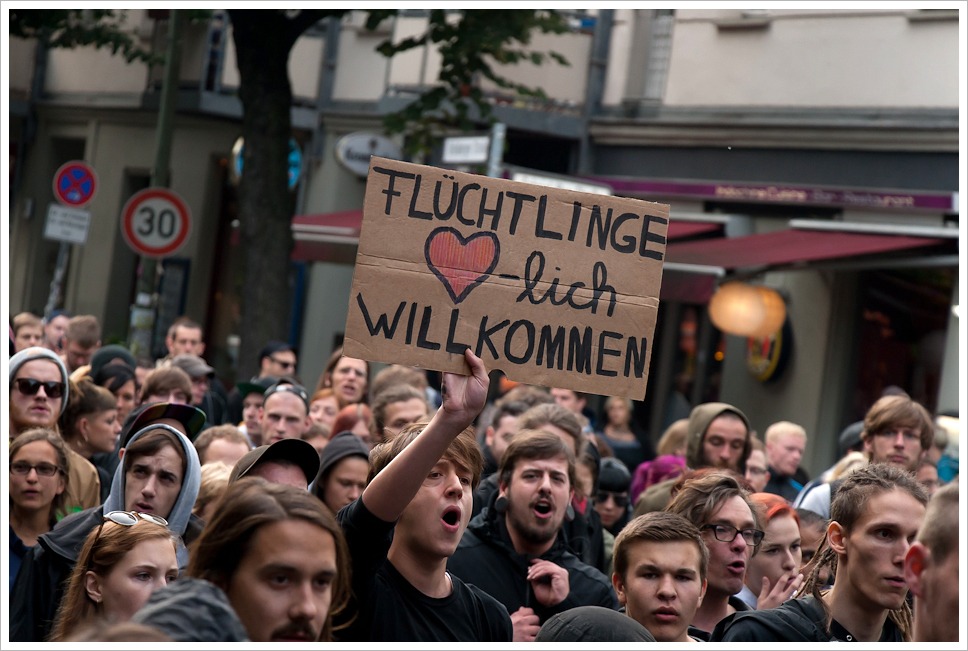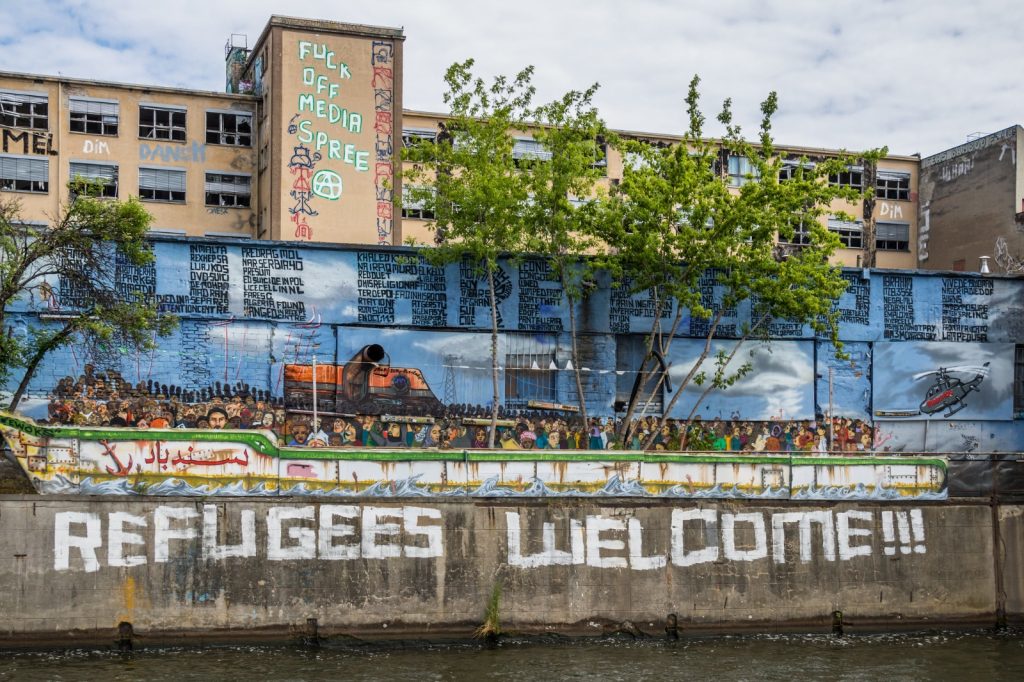
The Federal Ministry of the Interior and Community published half-yearly figures that were not at all encouraging about far-right attacks and protests against any person of foreign origin. Integration in the crosshairs.
By Carolina Menéndez Trucco
The number of politically motivated attacks against migrants, refugees, asylum seekers and their homes continue to rise. In the first half of the year, the Federal Ministry of the Interior and Community counted 80 incidents. In most cases, these are serious crimes such as hate speech, threats, beatings, arson attacks, even ending in murders. It is that, although only since German reunification, a record is kept on the victims of extreme right-wing violence, already the results have been impressive. Remarkably, there are more and more attacks, the majority due to a xenophobic background.
The figures speak for themselves. The onslaughts against foreign homes have been increasing. According to the documentation presented, most of the incidents were committed for racial and political reasons. In addition, in the research about the number of demonstrations and protests in front of the asylum centres, the Ministry of the Interior names 45 events for the entire semester. Therefore, these would have taken place exclusively in Saxony, since almost all of them were organised by the neo-fascist political group “Free Saxony.” Often under the slogan Nein zum Heim (No to home), the small party is only active in its own state, but the problem extends throughout Germany.
Chronology of violence
In short, according to the latest semi-annual report submitted by the Federal Ministry of the Interior and Community this year 76 people have already been injured, including nine children, and there have been 2.6 crimes per day against refugees. As if that were not enough, if the panorama from the early 1990s is analysed, the number of people who have been killed by extremists in Germany could rise from 94 to 198 cases. From bar shootings, shelter fires and knife attacks, to mock bombings to blame refugees and murders, the itinerary of hate has not stopped growing.
From racism and xenophobia to the homo-lesbo-transodium, the extreme right is not far short. To the crimes against migrants, refugees and asylum seekers add up those committed brutally against members of the LGBTIQ+ community. A country, in many ways, at the forefront of gender and diversity, unfortunately it also accumulates two attacks per day against the queer community. After all, the more violent vehemence, the less integration.

Migration, asylum and refugees in Germany
A place on earth. Due to the critical humanitarian situation resulting from armed conflicts, poverty, environmental catastrophes or massive violations of rights, 1.7 million people applied for asylum in Germany between 2015 and 2019. Until the Ukrainian refugee crisis of 2022, it was the biggest migration crisis since the end of World War II in Europe. The main nationalities came from Syria, Afghanistan and Iraq. It is that, apparently, fleeing from hunger, inequalities, the depletion of natural resources, oppression, persecutions and political confrontations unfortunately continue to be a constant in history.
Because war certainly brings forced migration. More than a million people have fled in 2022 from Ukraine to Germany since the Russian offensive in that territory. Most of the cases have been able to access housing and social assistance. However, the prospects for getting a job are often uncertain. It is that the harrowing migratory experiences are not reduced to the risk of crossing a border by land or by sea, they also imply new beginnings in another country, generally in another language and in another culture.
Immigration policy in the mirror
Considered the land of poets and thinkers since the 18th century, Germany not only philosophises and invents, also hosts. And above all, it needs manpower. As well as skilled workers in certain sectors such as transport, services and health care. Perhaps for this reason, the Ukrainian immigration flurry of 2022 continues to be added today by another group of people arriving from Africa, Syria, Afghanistan, the Middle East and all parts of the world. In any case, even though the living conditions offered by the so-called German Welfare State for those who come from poorer countries are attractive, in most cases refugees have difficulties in accessing vacant positions due to lack of language proficiency, training or required qualifications. But the obstacles do not stop there.

Given that German soil has been hosting refugees for a decade, not all sectors welcome them. For example, Germany’s border with Poland is the first line in hardening its immigration policy. There, the controls and the police presence are increasing. The thing is, the new government project is part of a draft that the Federal Ministry of the Interior and Community prepared after several discussions with the federal and local sectors. Still, the debate will continue further before a new regulation more restrictive can be introduced. Among other things, what is proposed is that the authorities have the right to refuse entry to people who cross or arrive in the country.
Consequently, while the extreme right rises in the polls, and in their attacks, Germany tightens up its policies and reinforces measures to reduce what are considered illegal border crossings. In principle, people apprehended are given the possibility to submit an application for asylum or protection. However, the official and social concern regarding the migratory flow does not cease.
A world for all
Not only Germany and the European Union, currently the rest of the countries also face great challenges on how to agree on common measures to find specific solutions, but in the long term. In general, their laws increasingly tend towards expulsion. The change should be undoubtedly in the direction of a socialist, supportive, inclusive and ecological policy. Of course, we pay attention to cultural diversity, but we get closer through everything that unites us, to those at the bottom. Asylum policies, therefore, should be thought of as the way to achieve a shared socialist world, without divisions between classes or between countries. In the end, borders are only imaginary. However, the challenges nowadays are concrete.
The first thing is to start by opening safe and legal routes of entry without risk to all those seeking asylum. Anyone who refuses to do so violates a humanitarian right. In addition to a state-civilian maritime rescue mission, as in the Mediterranean, persecutions, detention centres and expulsions must cease on land. All asylum seekers should be granted a right to remain after a longer stay. This measure means allowing people not only to arrive and stay, but also to be able to reintegrate socially and professionally, facilitating access to education, health and work. In short, it is about creating perspectives of inclusion for all. To achieve this, it is necessary to integrate both the native workers and the immigrants with each other.
It is outrageous that people seeking protection experience violence, hostility and exclusion as a response. That is why it is key to join forces in repudiation of all racist or discriminatory attacks -whether social or police- and to demand the government to investigate and punish them, as well as the regularisation of the “undocumented”, protection policies and solidarity support.
To the point: the extreme right is a symptom of capitalism in crisis and decadence. And like any dangerous symptom, to solve it, you have to detect it and fight it. Or, as Karl Marx said, “every liberation movement changes its character as it moves from utopia to reality.” In other words, while we battle against the right, the extreme right and the xenophobic governments, we support an anti-capitalist and revolutionary way out, a world without borders, where everyone can move freely.








